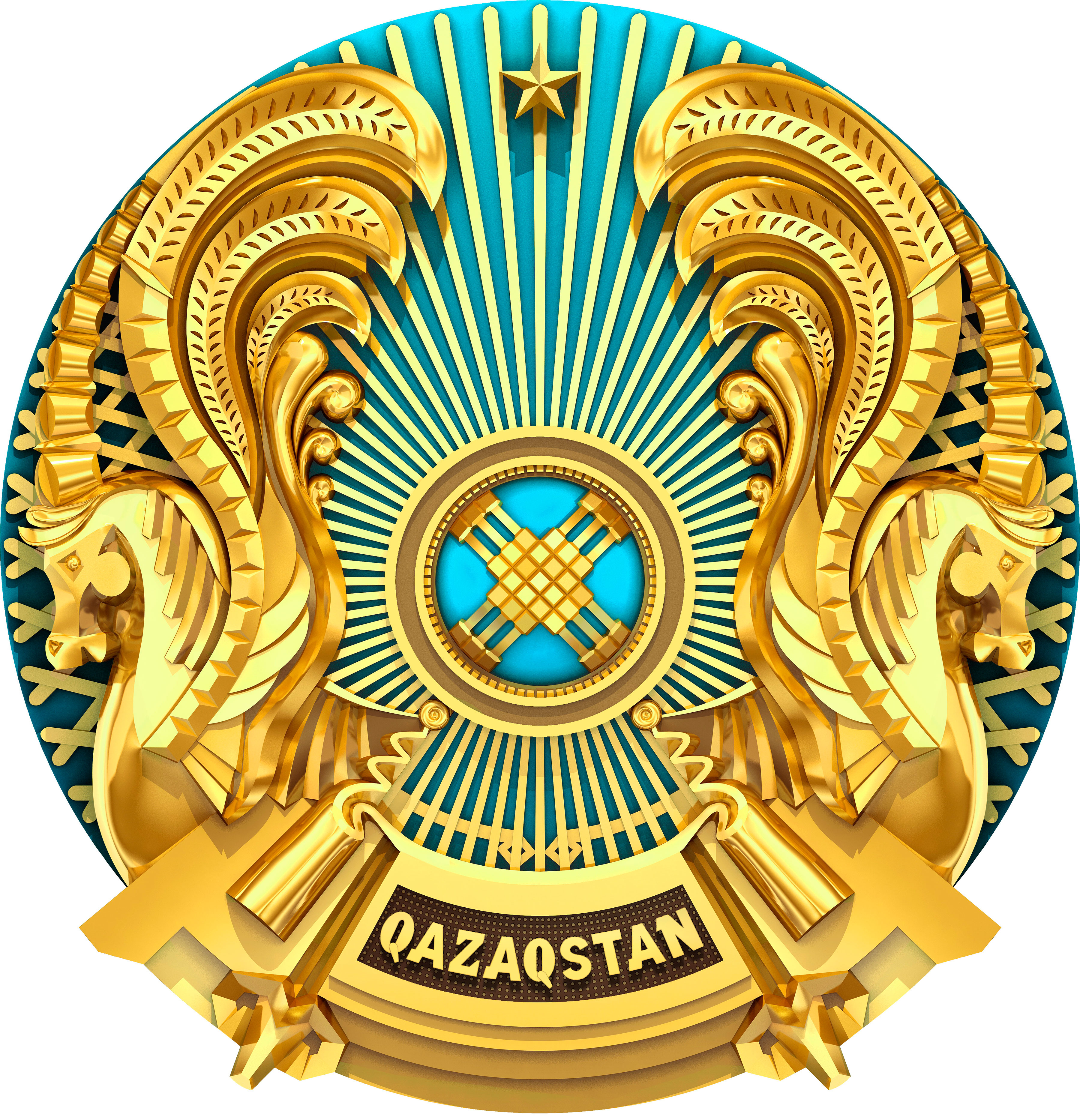The coat of arms is one of the main symbols of the state. The term coat of arms ("coat of arms") comes from the German word for "erbe" (heritage). Represents a sign of heritage of harmonious forms and objects with symbolic meaning, reflecting the cultural and historical traditions of the state
History testifies that the nomads of the Bronze Age, who inhabited the territory of modern Kazakhstan, manifested themselves through a special symbol-totem, the graphic concept of which was later called "symbol". For the first time, this term began to be used during the reign of the Turkish kaganate.
The coat of arms of sovereign Kazakhstan was officially adopted in 1992. Its authors are famous architects Zhandarbek Malibekov and shot – Aman Ualikhanov.
The state emblem of the Republic of Kazakhstan has a round shape. This is a symbol of life and eternity, which was especially revered by the nomads of the Great Steppe.
The central heraldic element of the state emblem is the image of shanyrak (upper domed part of the yurt) against the background of blue color. Around the shanyrak, uyks spread like sunlight. On the right and left sides of the shanyrak there are images of mythical winged horses. In the upper part – a voluminous five-pointed star, and in the lower part-the inscription "Kazakhstan". The image of the star, shanyrak, uyks, mythical horses, as well as the inscription "Kazakhstan"-gold color.
Shanyrak is the main system – forming part of the yurt, which resembles the blue dome and is one of the main sources of life in the traditional culture of Eurasian nomads. The image of shanyrak on the state emblem of the Republic is a symbol of a common settlement, a single homeland of all peoples inhabiting our country. Just as the strength and strength of shanyrak depends on the reliability of all its uyks, the achievement of happiness in Kazakhstan depends on the well-being of every citizen.
Winged horses from The Legend are considered a relevant heraldic element in the state emblem. The image of the tulpar in modern times shows courage, confidence and willpower. The wing of pyrak reflects the centuries-old desire of the multinational people of Kazakhstan to create a powerful and prosperous state. They are the embodiment of true thoughts and dreams and the desire for constant improvement and creative development. In addition, the golden wings of argymak remind of the Golden Spike, show the diligence of Kazakhstanis and the material well-being of the country.
In the past centuries, the Horn was actively used in the cult rituals of nomads, as well as for installation on the tip of the battle flag. The depiction of the gift of heaven, the good of the Earth, the victory of the campaign through the horns of various animals has taken a significant place in the symbolic compositions of many peoples. Therefore, a winged horse with horns, which brings abundance, is considered an important typological image with deep semantic and historical roots.
Another detail on the state emblem of the Republic is a five – pointed star. This symbol has been used by mankind since ancient times, it symbolizes the constant desire of people for the ray of truth, all good aspirations and eternal values. The image of the star on the state emblem reflects the desire of Kazakhstanis to become a country that intends to establish cooperation and partnership with all the peoples of the world. The hearts and hugs of the inhabitants of Kazakhstan are always open to representatives of the five continents.
The main color used in the coat of arms is the color of gold. It is a symbol of wealth, justice and generosity. In addition, the color of the flag, which is blue, is combined with the color of gold, representing the concepts of Clear Sky, peace and prosperity.



